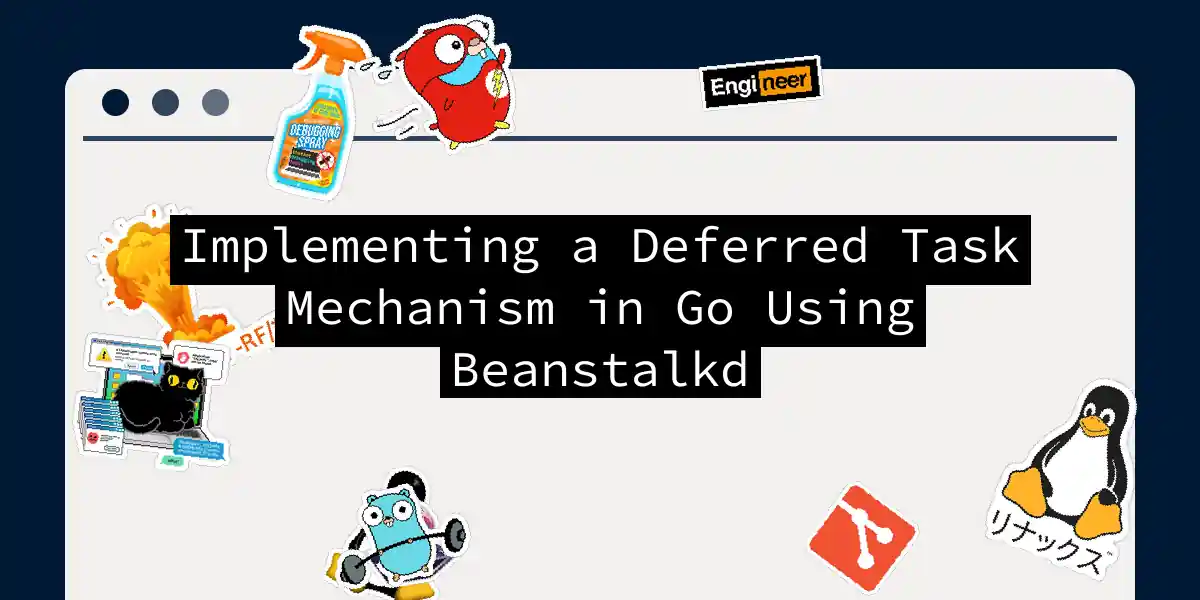Introduction to Asynchronous Processing
In the world of software development, handling tasks asynchronously is a crucial aspect of building scalable and efficient applications. Imagine you’re at a coffee shop, and instead of waiting in line for your coffee, you give your order and receive a number. You can then sit down and relax while your coffee is being prepared, rather than standing in line. This is essentially what asynchronous processing does for your application – it allows it to continue executing other tasks while waiting for time-consuming operations to complete.
Why Use Beanstalkd?
Beanstalkd is a simple, fast work queue that allows you to handle tasks asynchronously. Here are a few reasons why you might want to use Beanstalkd:
- Lightweight: Beanstalkd is incredibly lightweight and easy to set up.
- Fast: It is designed for high performance and can handle a large volume of jobs.
- Flexible: It supports various job states (ready, reserved, delayed, etc.), making it versatile for different use cases.
Setting Up Beanstalkd
Before diving into the Go code, you need to set up Beanstalkd on your system. Here’s how you can do it:
Installation
You can install Beanstalkd using your package manager. For example, on Ubuntu:
sudo apt-get install beanstalkd
Starting the Service
Once installed, you can start the Beanstalkd service:
sudo service beanstalkd start
Go Client for Beanstalkd
To interact with Beanstalkd from your Go application, you’ll need a Go client. One popular client is github.com/kr/beanstalk.
Here’s how you can install it:
go get github.com/kr/beanstalk
Basic Example
Let’s create a simple Go application that uses Beanstalkd to handle tasks asynchronously.
Producer (Sender)
First, let’s write a producer that sends jobs to the queue:
package main
import (
"fmt"
"github.com/kr/beanstalk"
)
func main() {
conn, err := beanstalk.Connect("tcp", "127.0.0.1:11300")
if err != nil {
fmt.Println(err)
return
}
defer conn.Close()
// Send a job to the queue
id, err := conn.Put([]byte("Hello, Beanstalkd"), 1, 0, 10*time.Second)
if err != nil {
fmt.Println(err)
return
}
fmt.Printf("Job ID: %d\n", id)
}
Consumer (Worker)
Next, let’s write a consumer that reserves and processes jobs from the queue:
package main
import (
"fmt"
"github.com/kr/beanstalk"
"time"
)
func main() {
conn, err := beanstalk.Connect("tcp", "127.0.0.1:11300")
if err != nil {
fmt.Println(err)
return
}
defer conn.Close()
// Watch the default tube
err = conn.Watch("default")
if err != nil {
fmt.Println(err)
return
}
for {
// Reserve a job from the queue
job, err := conn.Reserve(5 * time.Second)
if err != nil {
if err == beanstalk.ErrTimeout {
fmt.Println("Timed out")
continue
}
fmt.Println(err)
return
}
// Process the job
fmt.Printf("Received job ID: %d, Data: %s\n", job.ID, string(job.Body))
// Delete the job after processing
err = conn.Delete(job.ID)
if err != nil {
fmt.Println(err)
return
}
}
}
Advanced Usage: Delayed Jobs
One of the powerful features of Beanstalkd is its ability to handle delayed jobs. Here’s how you can modify the producer to send a delayed job:
package main
import (
"fmt"
"github.com/kr/beanstalk"
"time"
)
func main() {
conn, err := beanstalk.Connect("tcp", "127.0.0.1:11300")
if err != nil {
fmt.Println(err)
return
}
defer conn.Close()
// Send a delayed job to the queue
id, err := conn.Put([]byte("Delayed Hello, Beanstalkd"), 1, 10*time.Second, 10*time.Second)
if err != nil {
fmt.Println(err)
return
}
fmt.Printf("Delayed Job ID: %d\n", id)
}
Sequence Diagram
Here’s a sequence diagram to illustrate the interaction between the producer, Beanstalkd, and the consumer:
Best Practices and Considerations
- Error Handling: Always handle errors properly when interacting with Beanstalkd. This includes connection errors, job reservation timeouts, and job processing errors.
- Job Retries: Implement a retry mechanism for jobs that fail during processing. This can be done by burying the job and setting a delay before it becomes ready again.
- Monitoring: Monitor your Beanstalkd queues and jobs to ensure that everything is running smoothly. Tools like
beanstalk-consolecan help you visualize and manage your queues.
Conclusion
Implementing a deferred task mechanism using Beanstalkd in your Go application can significantly improve its performance and scalability. By following the steps outlined above and considering best practices, you can ensure that your application handles asynchronous tasks efficiently.
Remember, asynchronous processing is like ordering coffee – it lets your application do other things while waiting for the coffee (or in this case, the job) to be ready. So, go ahead and give your application the gift of asynchronous processing with Beanstalkd
